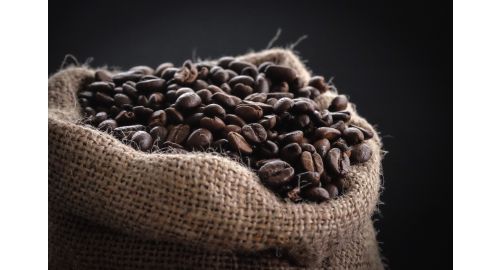The Ultimate Guide to Different Types of Coffee Beans
If you're a coffee lover, then you know that the type of bean used to brew your favourite cup can make all the difference. But do you know just how many different types of coffee beans are out there? From Arabica and Robusta to single-origin coffees from around the world, digging into the variety of beans available is an exciting journey for those who love their morning (or afternoon) pick-me-up! In this ultimate guide to different types of coffee beans, we'll take a look at some common varieties, delve into single-origin coffees and dig into what makes each type so special. Whether it’s fresh roasted or instant, light roast or dark—we've got everything covered! So let's dive in and get exploring – it's time to expand our understanding of one of life's greatest pleasures: good quality coffee.
Introducing Coffee Beans – What Are They and How Do They Differ from Other Types of Coffee
Coffee beans are the tiny seed that gives us the delicious drink we all know and love. While most of us are familiar with the "usual" coffee bean, learning about their wide variety can take your morning beverage to the next level! From lightly roasted beans to dark coffees, each variety has its own unique flavour profile and character. Though many might think all coffee beans must taste the same due to their small size, nothing could be further from the truth. As you learn more about each type of bean, you will quickly appreciate the subtle differences between them and understand how they impact each beverage. Understanding just a few key differences between light-roasted and dark-roasted beans can drastically alter your relationship with coffee; depending on your individual preferences, you may find yourself preferring one over another! So now is the time to get informed and experience a fuller appreciation for every sip of coffee.
Understanding Arabica Beans – Flavor Profile, Growing Conditions, and Origin
Arabica beans make up the majority of commercial coffee production and are the most recognized for their distinctive flavour. Growing these particular beans requires specific conditions that make their cultivation difficult, though the results can be extraordinary. The flavour of Arabica beans is subtle yet complex, with notes of nut, caramel, berry and dark chocolate coming together to create a delightfully smooth cup. In terms of origin, you'll find Arabica beans predominantly from Latin American countries such as Colombia and Guatemala, as well as East African nations like Kenya and Ethiopia. Understand more about this intriguing bean by doing your own research or buying some green Arabica beans to try roasting at home – both options will bring some unique perspectives on why this type of coffee bean is so special.
Uncovering Robusta Beans – Flavor Profile, Growing Conditions, and Origin
When it comes to uncovering what lies beneath the surface of coffee beans, a closer look at robusta beans will reveal their distinct flavour profile, growing conditions, and origin. Rich in chocolaty-nutty tastes when brewed, robusta beans are cultivated in low altitudes and typically from Western or Central Africa regions. Known for their higher levels of caffeine while having a lesser acidity than their cousin arabica bean. Although not as complex in flavour compared to its speciality counterparts, robusta beans are often used to give blends extra body with a hint of bitterness that can often be identified in some Italian espresso roasts. Though popular among individuals who prefer stronger-tasting coffees, one should have a taste for its nuttier characteristics before trying these hearty beans.
Discovering Liberica Beans – Flavor Profile, Growing Conditions, and Origin
If you're one of the adventurous coffee fans seeking out new flavours, varieties, and experiences, your search is sure to bring you to Liberica beans soon. Widely unknown in most parts of the world and yet popular in certain regions, Liberica beans offer a unique and complex flavour profile that is sure to excite your taste buds. Pronounced notes of fresh-cut grass and a distinctive smoky aftertaste characterize these beans, which are grown under special conditions such as having more exposure to direct sunlight than other types of coffee. This intense sun gives them their bold flavour. Originating from West-African countries like Liberia, Cote d'Ivoire, Nigeria and Cameroon, Liberica coffee is a unique source of delicious enjoyment!
Exploring Excelsa Beans – Flavor Profile, Growing Conditions, and Origin
Excelsa beans are an important part of the coffee industry. Originating from Africa and Ethiopia, they provide a unique flavour profile that sets them apart from other varieties. Excelsa beans tend to be milder in flavour than Robusta, but also hold a distinctive acidic aftertaste. Grown in warm climates with medium elevation and regular rainfall, Excelsa beans require specific conditions for optimal growth. As with all coffees, freshly roasted Excelsa will turn sour within one week, so it is important to use fresh beans if you’re looking for the true flavour experience. Understanding how much to roast your beans is key in unlocking their full potential—experimenting and finding what works best can provide great rewards for the discerning coffee drinker.
So, that's the wrap-up of coffee beans! From Arabica to Robusta, Liberica, and Excelsa. We've talked about the flavour profiles each type brings to the cup, the growing conditions they require and the destinations they often come from. With this guide at your fingertips, you're now able to identify what kind of coffee beans you enjoy most. Additionally, we've also given a few ground rules for ensuring that you get the perfect cup every time when it comes to grinding coffee beans. Looking for a great place to start? Try out our range of delicious coffee beans today –available in a variety of formats and fine roast level–and taste how the differences can offer notes of chocolate or nuts in your cup! With this post in mind, there’s never been an easier or tastier way to make great coffee in no time.







